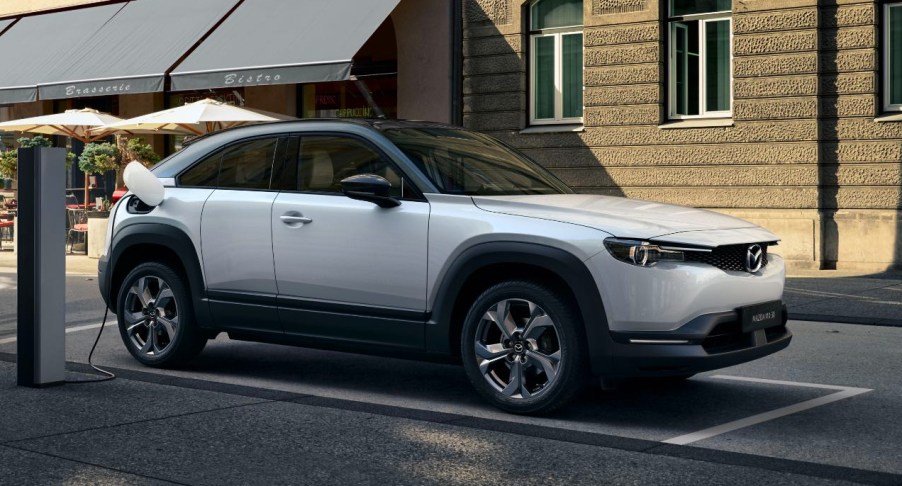
Mazda USA CEO Makes Interesting Mazda MX-30 EV Defense
Mazda produces an electric SUV, but auto enthusiasts and critics have been less than enthusiastic about its capabilities. The Mazda MX-30 doesn’t have much driving range compared to its rivals. Mazda USA’s CEO Jeffrey Guyton says that most EVs have more range than drivers will actually use.
Does the Mazda MX-30 have enough range for the average driver?

The only way to determine whether or not the MX-30 has a suitable driving range is to do a bit of math involving the average distance driven per year and the MX-30’s total range. A Kelley Blue Book article about the average miles driven per year claims that Americans drove an average of 14,263 miles a year in 2019. Drivers traveled significantly less in 2020, but COVID-19 hit in 2020…so let’s not use that number.
If the average driver travels for roughly 14,263 miles a year, dividing that number by 12 will give you an estimate of the average monthly driving range. Divide that quotient by four (four weeks in a month), and you’ll get a rough estimate of the average weekly driving distance. It works out to about 297 miles a week.
The 2023 Mazda MX-30 EV gets 100 miles of driving range on a fully charged battery. So, the average driver will have to have to charge an MX-30 EV about every two days to avoid completely draining its battery capacity. No battery capacity equals immobility. This sounds scary and impractical until you consider the future of EV charging and charging infrastructure.
The reality is that EV owners will charge their vehicles more times a week than ICE vehicle owners will refill their gas tanks. Charging an EV every two days isn’t unreasonable for folks with a fast charger at home. Companies like ChargePoint offer Level 2 chargers on Amazon for $749 (not including installation fees). Keep in mind that these chargers require specific circuits.
The Mazda MX-30’s range is suitable for this type of driver

If you get a Level 2 fast charger installed at your home, charging the MX-30 for a few hours every two days shouldn’t be too much of a hassle. Sure, you have to be wary of the range you use, but Mazda USA’s CEO makes a fair point about range anxiety and the future of EV ownership.
While just about every EV could use a little more driving range, the real issue is charging infrastructure. America needs a lot more charging stations for PHEVs and EVs. Companies like Volkswagen’s Electrify America are paving the way for the electric future. To truly enjoy the EV ownership experience, drivers will need to have safe home charging systems (EV batteries that don’t overheat) and access to plenty of local fast chargers.
Should you get a 2023 Mazda MX-30 EV?
The 2023 Mazda MX-30 EV starts at $34,110. GreenCarReports.com claims that the subcompact SUV makes 143 horsepower and 271 lb-ft of torque. The MX-30 EV isn’t for drivers with range anxiety. It’s an EV best for drivers that can easily set up a Level 2 charger at home and have access to several capable EV chargers in their community.
Will EV driving ranges get lower and lower as charging infrastructure improves? Only time will tell, but sales numbers prove that Americans are interested in electric vehicles that provide at least 200 miles of driving range.
Let us know your thoughts on the MX-30 EV’s practicality in the comment section below.



